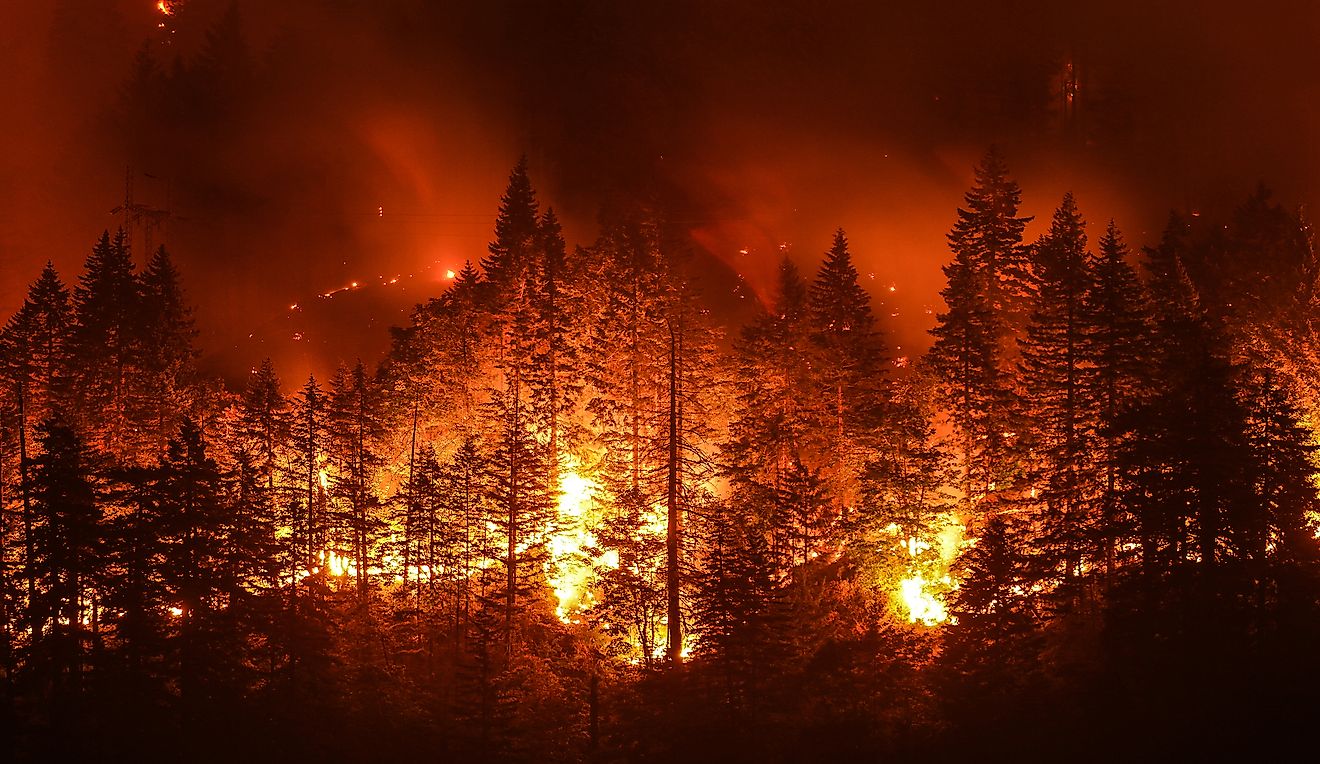What Is A Fire Regime?

Wildfires or bushfires are characterized by their type, intensity, the frequency they occur, the season they are experienced, and their extent. All these attributes that characterize wildfires are known as fire regime. Wildfires can affect different species in different ways, and as a result, plants could die as a result of fire if their tolerance to fire is overcome. The plants are affected differently by fire, depending on their ability to recover between the periods of fire occurrence. When fire frequency increases, the time interval for recovery is reduced. Fire effects are a complex combination of fire frequency, fire intensity, and the effects of the season when the fire occurs. In turn, these factors are also enhanced, reduced, or modified by other factors. Other than the direct effect that fire has on vegetation, it can also change the chemistry of the soil, especially the upper soil layer.
Types Of Fire
Generally, there are three types of fire, and they include surface fire, which burns the fuel on the surface such as litter, fallen branches, grasses, and shrubs among others. Surface fires are most common. Another fire type is the crown fire, which burns through the crown of trees and they are ignited by surface fires. Ground fire is another type of fire which burns by smoldering combustion of the subsurface organic fuel. This type of fire could be ignited by surface fires. Organic matter such as swamps, bogs, and soils like peat common in arctic tundra are susceptible to ground fire. In 1997, there was an extensive ground fire experienced in Indonesia that caused widespread haze and air pollution, which spread as far away as Australia. The aspects of fire regime like fire intensity, fire frequency, and fire-type could vary significantly with the topography of the region as well as the climatic zone and the vegetation cover.
Fire Intensity
The effects of fire are significantly dependent on fire intensity which is the rate of heat energy released when the fire is burning. The rate of energy released is dependent on fuel and content of moisture. During the dry season, most fuels are significantly dry; therefore, the intensity of fires during the season is high, and more plants are killed. Fire intensity has a strong correlation with the spread of fire, and therefore, the faster the rate of the higher the intensity of the fire. As a result, as the wind increases the speed, so is the fire intensity.
Fire Season
Most fires are experienced during the dry season or sometimes at the start of the wet season due to the content of moisture in the fuel load. The moisture content in fuels drops significantly as the dry season advances, and the fuels become highly flammable. As the fuel loads burn up so easily, the fire intensity also increases.
Fire Frequency
Fire frequency is the number of times that fire occurs over a period of time. The frequency of fire depends on the rate at which plants can regenerate in the intervals between fires. The higher the frequency of fire occurs, the lesser the time plants have to re-establish. On the other hand, high frequency of fires means there is less time for fuel load to build up.
Significance Of The Fire Regime
Fire regimes have the capability of changing the temporal and spatial variation in climate and topography. Having a better understanding of fire regimes in the past could help in predicting other future fire regimes as well as the relationship between climate and fire.











